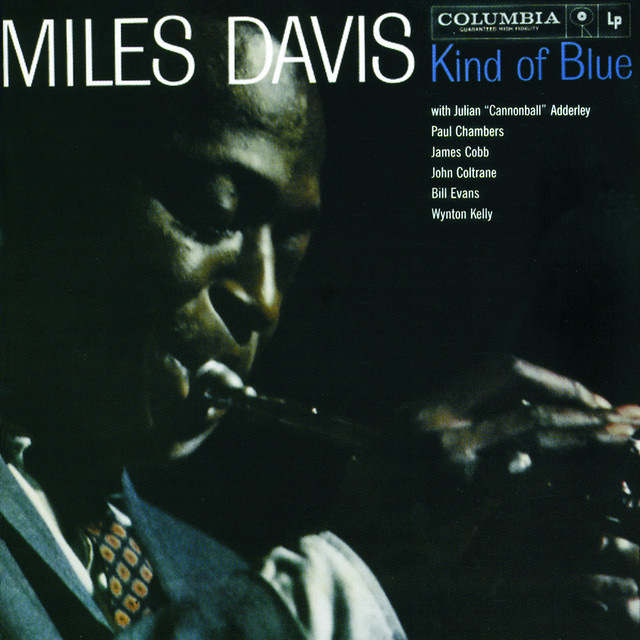Genre of the Day - Cool Jazz
Album of the Day - Kind of Blue by Miles Davis (1959)
Some 1000 years into the history of Christianity, Christians in eastern and Western Europe split acrimoniously into two separate churches, over reasons so puzzling as: whether leavened bread should be used in communion and if the Holy Spirit came from Jesus and God or by some other origin. While it took less than 1000 years, a few decades into its history jazz underwent the same split. Why it popped into my head that the East-West Schism was a good analogy for today’s genre, I do not know, but it loosely works: like Catholicism’s flashiness, bebop was warmer, more fiery and energized whereas like the Orthodox church cool jazz took a more reserved, austere approach, with the beauty in subtlety.
At the forefront of cool jazz was the seminal trumpeter and bandleader Miles Davis. Like many of the composers who have come up in this column, Davis was a particular, mathematical kind of music nerd, who did things like look at jazz from the music theory concept of modalities which brought more of a focus on scales and melodies to music (we’ll be focusing more on the cool aspect, as modal jazz is its own RYM genre). As opposed to what? I could not tell you. Reading anything music theory or scale related like this hurts my brain. Reading about the album, the track “Flamenco Sketches” consists of five scales, each played "as long as the soloist wishes until he has completed the series,” so I guess it’s a Schoenberg-esque methodical approach to creative improvisation in a balanced setting.
Miles Davis, like a few of his peers, had grown dissatisfied with bebop’s overemphasis on flashy, complicated solos and excessively fast tempos, seeking a more restrained subtlety while staying faithful to jazz’s musical complexity. Some were more faithful than others in this endeavor: Miles Davis literally devised the modal settings, i.e. the set of scales given to the performers rather than the sheet music, hours before it was set to be recorded, making this album deliciously spur-of-the-moment and innovative, even within jazz.
“Blue In Green” feels the most characteristic of the thesis of cool jazz: soft, pastel shades of piano with gentle bass and of course John Coltrane’s masterfully emotive saxophone. Of course, this union of two of the most iconic jazz musicians to have ever existed makes Kind of Blue not just the essential cool jazz albums, but considered one of the best albums of all time. Even all that coolness, though, doesn’t mute the jauntiness that is at the heart of jazz with the last two tracks. As withs some of the critically ubiquitous, oft-covered albums that come up occasionally in this column, part of me feels the sentiment of what does one say for an album that everything has been said about, that thousands of people have probably written analyses of? Even then, it was a pleasure to delve into the precise quietness of cool jazz that elevates the beauty in subtlety.




